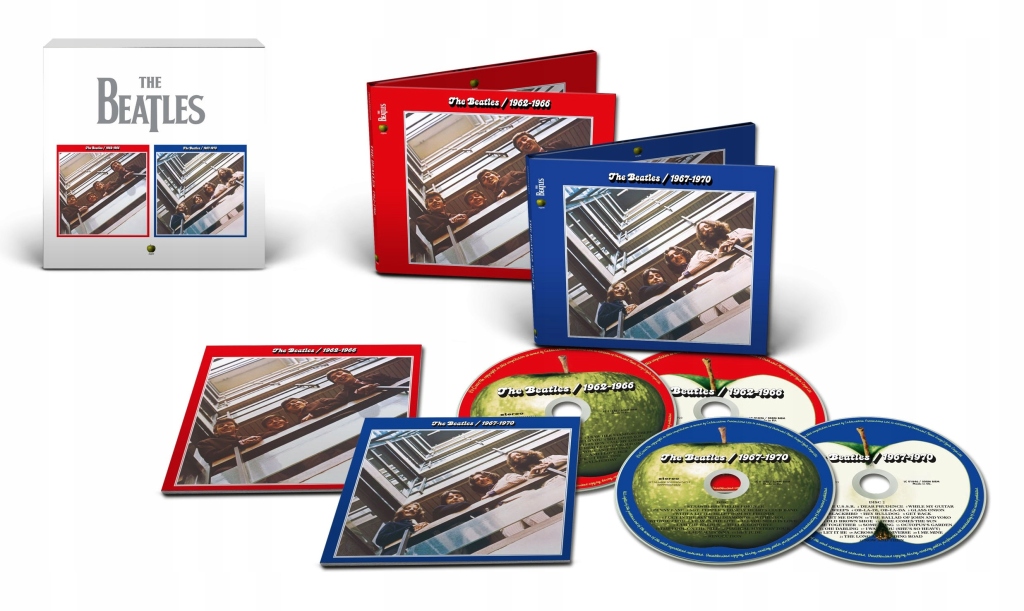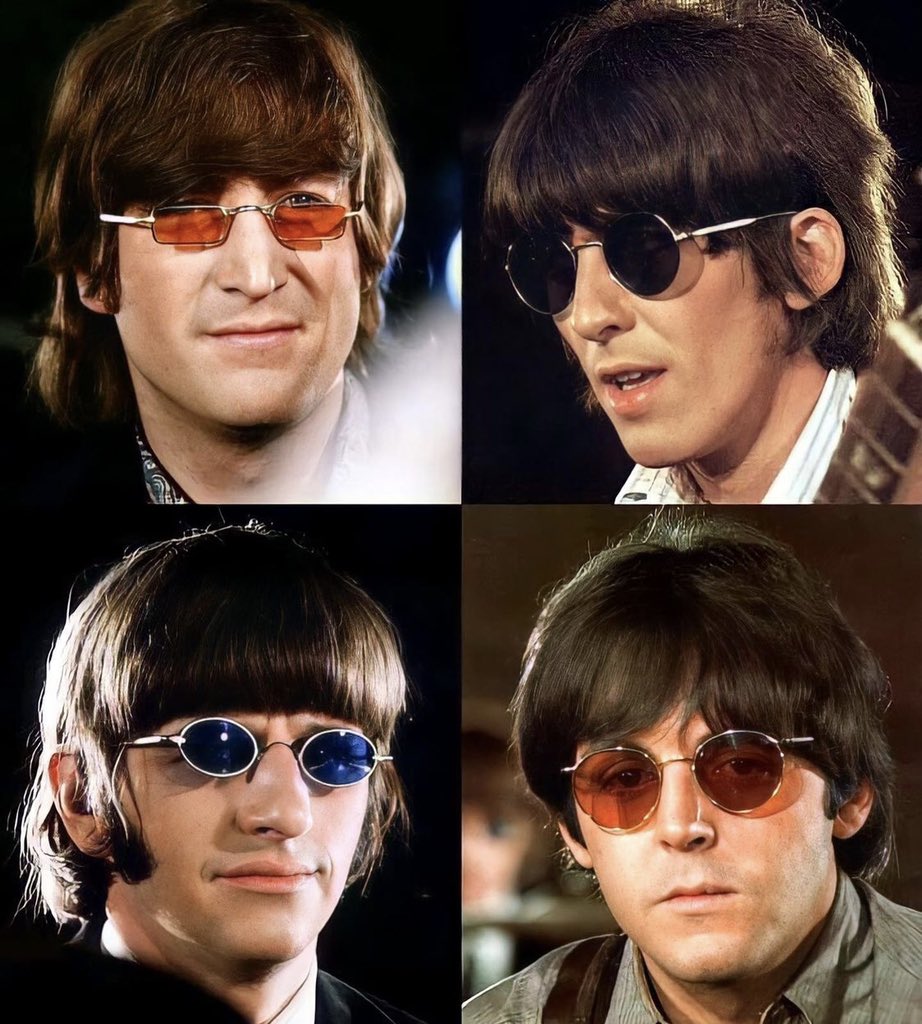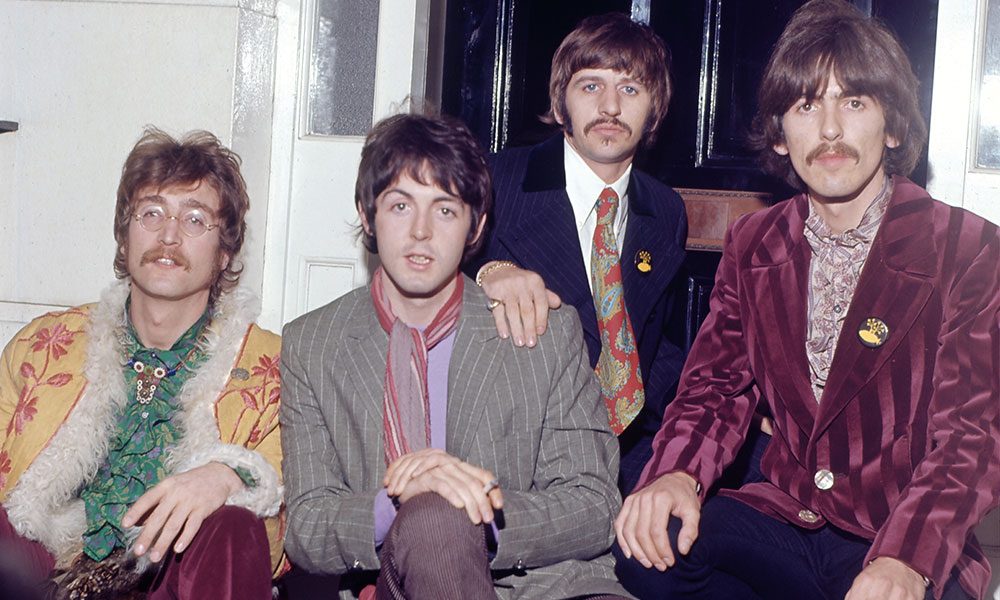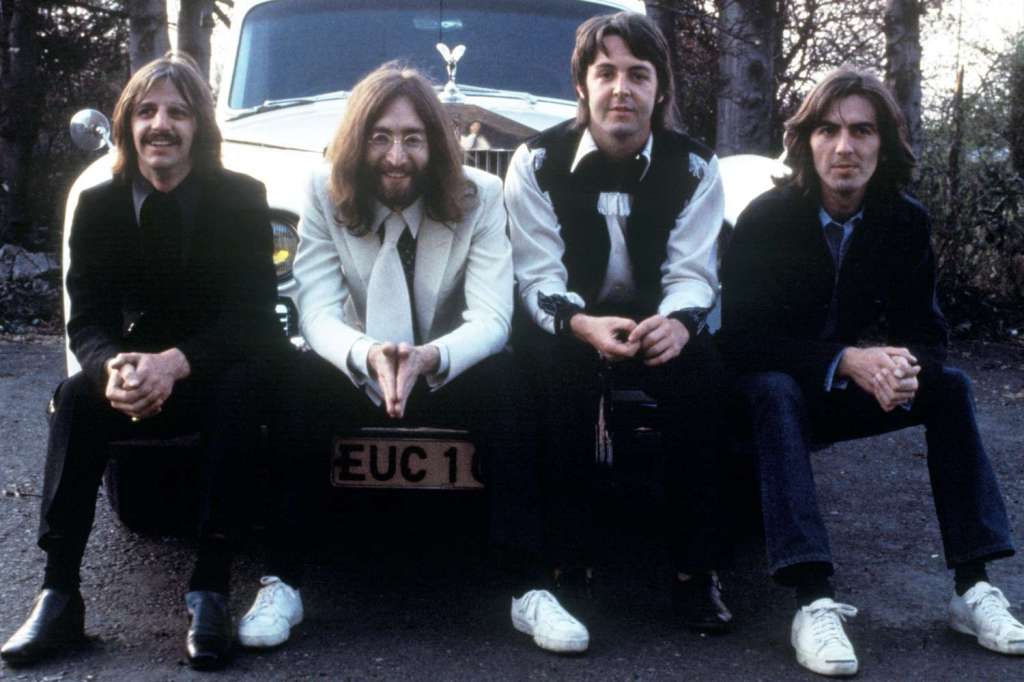Amid all the hullabaloo surrounding the release of ‘Now and Then’ in November, the major facelift and expansion of the definitive Beatles compilations which followed in its wake seemed something of a footnote. The Red and Blue albums – or 1962-66 and 1967-70, to give them their official titles – were overhauled and freshened up to cash in on the tidal wave of publicity accompanying “the final Beatles song” and also, handily, the 50th anniversary of their original release. This saw the addition of a whopping 21 tracks to the albums’ already-hefty 54-song running order, plus remixes of their entire contents. Some of these were already available through the various deluxe album reissues which have come out since 2017, but many – particularly from the 1962-65 period – were brand new, taking advantage of the groundbreaking MAL technology developed for Peter Jackson’s 2021 Get Back documentary to separate all the instruments and vocals baked into the band’s early recordings, for the first time. All of this, we were told, would make the collections much more attractive and interesting to today’s young audiences listening to music via streaming platforms on their phones, and encourage them to dig deeper into The Beatles’ wider catalogue. But, in this instance, is more really more?

As I’ve written before, even though the Red and Blue albums came out after the band’s demise and were effectively a money-making mechanism devised by erstwhile Apple supremo Allen Klein, I’m in full agreement with all those who see them as a key part of The Beatles catalogue, a near-perfect collection of highlights spanning their entire recording career. An ideal introduction for anyone who wants to know what all the fuss was about, beautifully packaged and sequenced, a potted history which – once digested – just makes you yearn to hear more. A gateway to this most wondrous of musical journeys which, for hundreds of thousands (if not millions) of us, triggered lifelong devotion and listening pleasure. One that has introduced generation after generation to the band over half a century. That being the case, I’m not sure it was wise to tamper with it to this extent – a bit like adding extra colours to the Mona Lisa, or those notorious extra scenes and effects worked into the various re-releases of the original Star Wars trilogy. I’m not sure much of it was needed, and some aspects might even be slightly counter-productive.
I should say I completely understand Apple’s desire to monetise/maximise the release of ‘Now and Then’. Even by Beatles standards, this level of publicity doesn’t come along very often, and just releasing a new single wouldn’t yield much in the way of financial returns or sustained, reinvigorated interest in the band’s full body of work. It was a golden opportunity and had to be attached to something, to lead people back to the wider catalogue, offering something for newcomers, casual fans and hardcore Fabs junkies alike. We now know that ‘N&T’ was originally scheduled to come out in the autumn of 2022, marking the 60th anniversary of their first single with the release of their last. At that point, Apple was considering the creation of a brand new compilation to go with it, largely based on the most popular Fabs tracks in the streaming sphere (where ‘Here Comes The Sun’ reigns supreme, for example). But, as ongoing work to improve the quality of John’s vocal delayed the single’s release, this plan was dropped for some reason, and the Red and Blue anniversary subsequently loomed into view instead. Voilà, Apple bosses must have thought to themselves, problem solved!

But was it? Expediency and marketing symmetry aside, I think sticking ‘N&T’ on the end of the Blue album was a clumsy and ill-conceived idea. For a start, call me a stickler for accuracy but the clue is in the title – it’s 1967-70, not 1967-2023. Moreover, while I’m definitely not one of those people who disputes its claim to being a fully-fledged Beatles song, adding it here jars with the original, natural running order of the two collections, which starts with the band’s first single ‘Love Me Do’ and ends with the last, the suitably elegaic ‘The Long and Winding Road’ (though I always sequence the tracklist to end with ‘Let It Be’, which I think works as an even better closer). Adding ‘N&T’, good as it is, makes for a less satisfying listening experience. It could have worked IF they had included ‘Free as a Bird ‘ and ‘Real Love’ as well, giving the full picture of the band’s reunion coda. And, as they are hit singles in their own right otherwise unavailable on any Fabs compilation beyond the increasingly forgotten Anthology CDs, they should’ve been on any expanded version of these albums anyway….except that brings us back to the whole 1962-70 parameter conundrum we came in on.
And what of the 20(!) 1960s-era songs Apple added to running order? To begin with, I really don’t see the logic of adding so many more tracks. While producer and remixer-in-chief Giles Martin claims this will be “just the start” for many new listeners, encouraging them to seek out the entire catalogue, I wonder if the end result for many will be just the opposite – after all, 75 tracks of anyone’s music will be more than enough for lots of people, especially in the streaming age when you can flit from track to track and, indeed, act to act at the flick of a finger. Or rely on curated (or shuffled) playlists which will trawl a band’s whole recorded canon for you, dispensing with the whole concept of a limited compilation. The genius of the original Red and Blue selections was that, while they gave you all the hits and a host of universally-known songs which encompassed all their albums, providing such a thrilling start-to-finish listen, they never felt like the full stop that many greatest hits compendiums do. The music was so great – and, equally as important, so varied – that it just served to whet the appetite for further exploration. Even classic numbers that were omitted served to underline this fact. If something like ‘I Saw Her Standing There’ didn’t make the cut, for example, it made you realise the wealth of riches at The Beatles’ disposal. To me, throwing in a load of extra tunes at this stage of the game just serves to dilute that effect.

And then there is the problem of choosing the additional tracks, which was doomed to dismay as many people as it satisfied – as evidenced by the numerous ‘I can’t believe xxxx was/wasn’t included’ howls of outrage which greeted the new tracklistings on social media. For me, once you move past the inarguable criteria of singles and beloved album tracks, stocking a ‘best of’ is always a murky, arbitrary and ultimately flawed exercise, and so it proved in this case. Okay, ‘I Saw Her Standing There’, ‘Twist and Shout’ and ‘Blackbird’ are no-brainers, ridiculously famous tunes that should unquestionably have made it first time around. But while I think ‘You Can’t Do That’ is one of their greatest mop-top era songs, I can make no objective case for its inclusion here. Likewise, is ‘Glass Onion’ really a better track than White Album Lennon stablemates ‘I’m So Tired’ or ‘Sexy Sadie’? And, if so, by whose judgement? Or does ‘Oh Darling’ really warrant a place above ‘You Never Give Me Your Money’s, or ‘I Want You’ as a similarly stronger representative of Abbey Road than ‘Because’? Not in my book. And while it has lots of hip world music cachet these days, ‘Within You, Without You’ cannot lay claim to anywhere near the same level of recognition and broader popularity as ‘When I’m 64’ – yet it’s the former which bags a place here.

Of course, the last example is part of the key rationale running through the new-look set, that of Beatles politics and a rough parity of esteem between the three writers – with George (and the Harrison estate) getting a much larger share of the cake in the process. While this may be very fair and worthy, it doesn’t really make any sense in the context of these records. I’ve seen people exclaim their astonishment that George didn’t get any songs on the original Red album, but the fact of the matter is that of the 116 songs the Fabs put out in their first four years, he wrote just eight of them. And, as much as I love something like ‘I Need You’, for example, he didn’t really start matching the very best Lennon/McCartney numbers until the Revolver period. With half the numbers recorded during the Rubber Soul sessions already included, did we really need ‘If I Needed Someone’ as well? And while I bow to no one in my admiration of ‘I Me Mine’, does it have the mass appeal of ‘Two of Us’ or ‘I’ve Got A Feeling’ from the same Let It Be album? Such additions smack of tokenism, pure and simple, to ensure Olivia and Dhani’s sign-off on the project.
As for the remixes, well, you pays your money and you takes your choice. As I’ve posted before, while I can understand the rationale, I’m not a huge fan of Giles Martin’s efforts with The Beatles’ catalogue (for the most part) – the sound is undoubtedly enhanced, which is great, but moving instruments and vocals around to the extent he does just jars for me. That said, his work on the early material here (unlocking the original basic two-track and four-track recordings) really produces dividends, giving the uptempo numbers in particular a lot more punch. Some tracks sound great, like ‘From Me To You’, ‘I Feel Fine’ and ‘You Can’t Do That’. And I picked out things in ‘Day Tripper’ I’d never heard before. But, again, some of his remixing choices baffle me, like shoving the solo in ‘I Saw Her Standing There’ on one channel. Likewise, putting Paul’s guitar on ‘Yesterday’ over to one side is just distracting, and the mix of ‘Norwegian Wood’, with fingerclicks (or whatever they are) in the centre and other things panned to the right and left sounds dislocated and weird. Things really go haywire, though, on the radio-feed fade-out section of ‘I Am The Walrus’, a radical change which makes the recording sound significantly different to the one originally released, a move which has understandably drawn the ire of many fans. Less obviously but equally as annoying for me, the fresh mix of ‘Old Brown Shoe’ sounds messy and clumsy, neutering the tune’s no-nonsense drive, blunting its edge. I guess some people will love what Giles has done, younger fans won’t notice and traditionalists like me will bemoan his tinkering but, as long as the original mixes remain available, I don’t suppose it matters too much either way. And some of the Abbey Road 2019 mixes sounded better than I had remembered, so maybe my ears are slowly coming around to the changes.

So, accepting the remixes, how would I have changed the albums? Well, I would have limited the additions to just six tracks, bring each compilation up to 30 tracks apiece. Along with the three ‘no-brainer’ songs I mentioned earlier, I would have dropped in a track from either With The Beatles or Beatles For Sale, both of which were poorly-served originally (and the latter still has just one paltry track, compared to the seven – seven – lifted from Rubber Soul) – probably ‘No Reply’, which was under consideration as a single back in 1964 before ‘I Feel Fine’ came along. And I would definitely have added ‘Taxman’, upping both the Harrisong and Revolver quotient on the Red album. Finally, I have no quibble with the inclusion of ‘Hey Bulldog’ as the best representative from the Yellow Submarine album (though ‘It’s All Too Much’ would have worked just as well), but I would certainly have placed it before the White Album songs, not after, as Apple have bizarrely done here. Yes, I know Submarine wasn’t released until early 1969, but all of its songs were recorded and aired in public (on the film soundtrack) long before the White Album was even completed, never mind released. But doesn’t the same apply to the Let It Be material, recorded before Abbey Road but placed after that album’s songs on the Blue running order, I hear you cry? Well, yes, but all four Let It Be tunes included here were not completed or released in any form until long after Abbey Road came out – so I think it’s fair they get to close the book here.

But, of course, that still leaves us with the problem of where to put ‘Now and Then’. Personally, I think it should have been placed where it was always intended to go – as the opening track on the third volume of the Beatles Anthology CDs, which could have been remastered and revised/expanded especially for the occasion, perhaps alongside a spruced-up version of the accompanying documentary series (on Blu-Ray discs or a streaming platform, or both). True, there are issues with that. Some of the then-rare material first released on those discs has been superseded by the deluxe box sets of the later Fabs albums released since 2017, and no doubt that process will continue as the earlier records are revisited in similar style over the coming years. I still think those collections, with some changes, have a place in The Beatles catalogue, as part of a big multi-media exploration of the whole Anthology period, but that’s a post for another time. But even if Apple did ultimately put something out along those lines, it would still leave ‘Free as a Bird’, ‘Real Love’ and ‘Now and Then’ available only on a rarities grab-bag aimed at hardcore fans, rather than front and centre on a more mainstream hits collection. I think Apple missed a trick here, because they could have been really radical and issued remixed and (slightly) expanded Red and Blue sets AND a Green Beatles 1970-2023 30-track compilation, showcasing 27 of the biggest solo hits alongside the three reunion tracks. Their 90 biggest tracks, spanning 60 years. “But it’s not The Beatles!” I hear some people cry. Well, we’ll just have to agree to disagree on that. It would be a fabulous way to introduce anyone to the band’s body of work, together and solo. Though, on second thoughts, scratch that idea – even if the United Nations’ entire diplomatic corps were involved, it’s hard to imagine the negotiations over individual Beatle song allocations on that third compilation being resolved in our lifetimes.